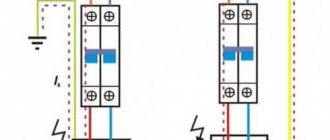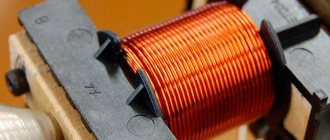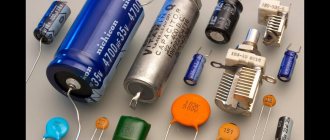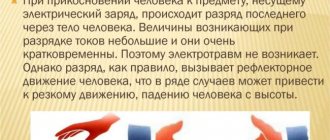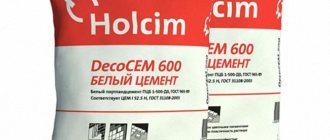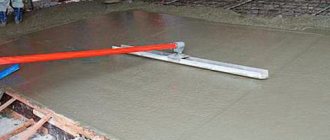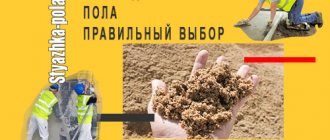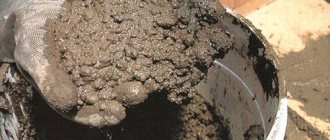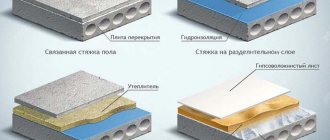Autoclave processing of cellular concrete products.
The technology of autoclave processing of products made of cellular concrete is considered.
Autoclave processing is one of the most important operations in the manufacture of products from cellular concrete. Its modes directly affect such quality characteristics of the finished product as frost resistance, drying shrinkage, compressive strength, and appearance of products (chips, cracks). A basic understanding of the processes occurring in the autoclave is important both for fully automatic control of the autoclave and for manual control.
In this article we will briefly summarize the experience gained in autoclaving.
The manufacturing process of cellular concrete
This section provides a brief overview of the entire process of manufacturing cellular concrete, since certain operations included in this process directly affect the behavior of the material during autoclave processing.
Cellular concrete is made from binders, sand or ash, a gas-forming agent and water. The binders - lime and cement - contain CaO, which is critical to the process. Sand or ash introduces SiO2 into the process. From the components CaO, SiO2 and H2O in an autoclave under the influence of high pressure and high temperature, a new mineral is formed - tobermorite (C4S5H5).
Actually, the formation of new minerals with a tobermorite structure elevates autoclaved cellular concrete (in common parlance - aerated concrete) to a completely different rank compared to non-autoclaved cellular concrete (“foam concrete”). Autoclave processing provides significantly higher physical and mechanical characteristics of aerated concrete products in comparison with foam concrete products.
Autoclave processing provides significantly higher physical and mechanical characteristics of aerated concrete products in comparison with foam concrete products.
The chemical processes occurring at different stages of production can be represented as follows:
1. The release of hydrogen at the stage of formation of a porous structure in raw material:
2. Formation of hydroxides and hydrosilicates at the stage of raw material gaining plastic (transport) strength:
3. Formation of new minerals (tobermorite) at the stage of autoclave processing:
For the most complete reactions to occur during autoclave processing, it is necessary that the starting materials have a sufficiently finely dispersed structure. At the grinding stage, gypsum stone is added to the silica component, which serves, first of all, to regulate reactions in the autoclave, and also accelerates the acquisition of the required plastic strength by the raw material.
In the mixer, raw materials are mixed, and the quality of mixing can be influenced by both the mixing time and the sequence of introduction of raw materials into the mixer. At the exit from the mixer, high homogeneity and a certain viscosity of the mixture must be ensured.
One of the most important parameters is the temperature of the mixture at the outlet of the mixer, which greatly influences the entire further process. As the gas mass swells and the raw material gains the plastic strength necessary for cutting, the temperature in the mass increases. Roughly speaking, we can say that the temperature rise lasts approximately 1–1.5 hours; further increase is only 1–3 °C. However, the temperature in the mass is distributed unevenly; it decreases in the layers that are in contact with the sides of the casting mold and air.
Since the temperature of the array and its distribution are important for some stages of autoclave processing, we would like to pay special attention to the fact that all are equipped with thermal tunnels that prevent the arrays from cooling through the walls of the casting molds. In addition, the casting molds of the first cycle are always brought to a temperature approximately corresponding to the casting temperature in thermal tunnels.
When cutting massifs, much attention is paid to the absence of drafts, especially in winter. The cut masses are also located in thermal tunnels, which prevent the temperature of the surface of the raw material from decreasing, since heat transfer into cellular concrete during autoclave processing occurs the faster, the higher its temperature when loaded into the autoclave.
Autoclave processing steps
When developing autoclave processing modes and linking them to a specific technological cycle, it is necessary to take into account a lot of factors and features of a particular production: quality of raw materials, mixture parameters (temperature and W/T ratio), range of products (dimensions, presence of reinforcement, density of cellular concrete ), location of the steamed masses in the autoclave, conditions and holding time before autoclave treatment, and more.
Autoclave processing is fundamentally divided into four stages:
(1) preparing cellular concrete for pressure rise;
(2) pressure rise;
(3) isothermal holding of cellular concrete at a certain temperature and pressure;
(4) depressurization and preparation of products for unloading from the autoclave.
The first stage may include (together or separately) the following activities:
1. Blowing or preheating products without pressure.
2. Preheating of products under pressure.
The purpose of the first stage is to optimally prepare the raw material and the medium in the autoclave for the second stage of the process - increasing the pressure.
From the experience of our work it follows that for products whose internal temperature is less than 80 °C, the most preferable of the above-mentioned first-stage measures is vacuuming.
Due to the decrease in pressure in the autoclave, the water in the material begins to boil. The boiling of water begins in the warmest part of the massif, namely in its inner region. With a further decrease in pressure, boiling moves from the internal region of the mass outward, which leads to the complete removal of air from the material. At the same time, the material itself heats up, the temperature throughout the thickness of the array is equalized. The required vacuum depends on the final temperature of the array and is typically 0.5 bar. The maximum discharge is achieved after 25–30 minutes and is then maintained for 15–25 minutes. Vacuuming must be done in a hot autoclave (the temperature of the autoclave wall must be at least 80 °C). This temperature is always easy to maintain in constant production conditions. Otherwise, the autoclave must be preheated without any product before starting the autoclave process.
Vacuuming must be done in a hot autoclave.
The reasons for poor evacuation may be malfunctions associated with the vacuum valve, automatic control system, as well as poor functioning of the vacuum pump.
The second stage—pressure increase—consists of heating the material to the isothermal holding temperature (usually 190–193 °C). Heating occurs mainly due to the condensation of hot steam on the relatively cold surface of the arrays, the temperature of which at the beginning of the process is lower than the temperature of the saturated steam. The resulting condensate transfers heat into the cellular concrete. Condensation of water from steam can occur both in the form of drops and in the form of closed water films. In what form this occurs depends, first of all, on the temperature difference between the steam and the cellular concrete. The formation of closed films interferes with heat transfer, which is extremely undesirable.
To obtain high-quality products, pressure increase should be carried out in three stages:
(1) from –0.5 bar to 0 bar – 30–45 min;
(2) from 0 bar to 3 bar - 30–45 min;
(3) from 3 bar to 12 bar - 65 min.
If chips and cracks appear on the products, then the pressure increase in the first two stages must be carried out more slowly. However, if increasing the time of each stage to 60 minutes does not give the desired effect, you need to intervene in the pouring process: change the mixture parameters.
When cellular concrete reaches a temperature of 150 °C, accelerated exothermic heating of the masses begins due to the energy released during the formation of hydrosilicates. Particular attention should be paid to the fact that stopping the rise in pressure and, even more so, reducing it can lead to the destruction of cellular concrete by excess internal pressure. This is especially true for reinforced products and concrete, the density of which is more than 500 kg/m3.
Stopping the rise in pressure and, even more so, reducing it can lead to the destruction of cellular concrete by excess internal pressure.
Review of equipment for the production of aerated concrete
The production of popular building stone (aerated concrete) was previously possible only in large specialized factories. Now, improved technology makes it possible to produce aerated concrete blocks on production sites or at home, taking into account the planned production, technological features, and financial capabilities of the entrepreneur. Depending on how production is organized, you can buy stationary equipment, a mini-plant or a small mobile unit, using them to produce gas blocks of varying densities.
Features of aerated concrete production technology
A cellular block is obtained from a mixture that includes several main components in certain proportions:
- sand – from 20 to 40% (maximum fraction size 2.1 mm, clay content no more than 7%);
- lime – from 1 to 5%;
- cement – 50-70% (grade M400-M500);
- water – 0.25-0.8%;
- gas-forming agent (aluminum powder) – 0.04-0.09%.
The technology allows the use of additional components: plasticizers (to improve the quality characteristics of aerated concrete) and hardening accelerators, which reduce the duration of the production cycle. To obtain a gas block with additional properties, slag, wood shavings, and gypsum are used as fillers. The recipe is selected depending on the desired density: the foundation block is made stronger than a partition or thermal insulation block. It should be noted that the gas block for thermal insulation should be the most porous and light, for which sand is completely excluded from the recipe.
There are two types of finished products: non-autoclaved and autoclaved aerated concrete. The first option is much easier and cheaper to make with your own hands, but the resulting block has a low density and insufficient dimensional accuracy. The second option is stronger, has a more uniform structure and low heat capacity (0.09-0.018 W). In the Russian climate (except for the northern regions), an autoclave block can be used for the construction of single-row walls with a thickness of about 400 mm.
The production of aerated concrete products is not particularly complicated, but requires precise implementation of technological techniques.
- Making the mixture. Pre-measure the required amount of components, load them into the mixer and mix.
- Introduction of a blowing agent. The operation is carried out 10-15 minutes after the start of mixing. Aluminum powder or paste reacts with lime, causing gas to be actively released.
- Receipt of the semi-finished product into molds or onto a tray. After curing, the aerated concrete on the tray is cut into blocks.
- Maturation - for this purpose, aerated concrete blocks are kept for 10 to 18 hours.
- Autoclaving is an important stage in the production of high-quality aerated blocks. The aerated concrete, molded and cut into individual elements, is loaded into a special autoclave oven. In a sealed chamber at a temperature of 190°C, each block is treated with saturated water steam under an excess pressure of 12 kg/cm2.
- Drying. The non-autoclaved aerated block is dried naturally for 3-6 days.
- Maturation. The aerated concrete is moved to a warehouse, where the block gains strength in about 30 days.
- Transportation to the consumer. The gas block is pre-packed in shrink film and placed on wooden pallets.
Overview of the necessary equipment for the production of aerated blocks
Equipment for the production of aerated concrete can be different - from a small installation that produces several dozen blocks at a time, to a large-scale automatic line that provides industrial scale. It all depends on the budget, requirements, availability of premises, employees, goals, etc.
If an aerated block is produced to reduce the cost of building a house and other structures on the site, a small installation (more like a machine tool) is also suitable. When you plan to organize a business, it is better to immediately buy good productive equipment that can give a large output and ensure the development of the idea.
In Moscow and the regions it will not be difficult to find any equipment, so the most important thing is to determine the requirements and choose the appropriate option.
Conveyor
This type of equipment requires maximum automation of the process, minimal participation of workers in production, the highest cost of a set of devices, serious requirements for the availability of free space due to production volumes, the presence in the set of everything necessary for the implementation of all stages, and a fairly high level of profitability.
What does the standard delivery package of conveyor equipment include:
- Raw material bunkers and containers.
- Conveyor belts through which components arrive.
- Device for mixing the solution.
- Forms for filling.
- Autoclave units.
- A special complex for cutting raw materials into separate even blocks.
- Conveyor for mixing.
- Crushing plant.
- Several carts.
- Remote control for efficient process control automatically.
- Forklift.
On average, such equipment costs up to 55 million rubles. This is a large amount and choosing this option is relevant if you want to organize a business - the investment will pay off, since the line allows you to produce at least 300 thousand cubic meters of material per year. This is the fastest, most efficient and automated block production process.
To accommodate all the equipment, you need to find a site of about 4000 square meters. If purchasing a line is too expensive, you can consider using used equipment. There are risks, but also advantages. Products made on an Inntech-100 type conveyor, which costs 3 million rubles (although its productivity is lower), enjoy a good reputation.
The peculiarity of this installation is the immobility of the mixing installation. But the forms move and are filled automatically. The mechanical cutting complex requires human participation.
German production lines have proven themselves to be the most durable and highly productive. Aerated blocks produced using these lines are of the highest quality and exactly correspond to the specified characteristics.
Stationary
Equipment for the production of stationary aerated concrete costs much less, but is also significantly inferior in productivity. Thus, such lines produce on average no more than 50 cubic meters of finished material per day. The installation kit includes: a boiler for heating water, a vibrating sieve, belt-type conveyors for supplying components to the mixing apparatus, raw material dispensers.
For the full operation of stationary equipment, you will need to attract workers, and more than one. For installation, a room of 500 square meters will be sufficient. The material is of excellent quality and this option can be a good start for a successful business.
Mobile
This type of installation is good for beginners and those who want to produce aerated concrete for themselves. The equipment has no special requirements - you can make it yourself from purchased components and parts, all units will operate from a 220 W network (other types of equipment require 360 W), but production volumes are minimal - 2-10 cubic meters of material per day.
The main advantages of mobile installations are minimal investments, the ability to independently assemble and maintain them, and the absence of requirements for large areas. You can make aerated blocks at home in one of the utility rooms, by loading the components into the mixer yourself and forming blocks from them. True, the installation does not require an autoclave, so the quality of the material will be significantly lower.
Review of methods for producing aerated concrete blocks
To produce a gas block, a production line is completed, which includes:
- mixer for preparing a working suspension solution;
- activator or compressor;
- dispensers for water and bulk components;
- device for cutting aerated concrete;
- autoclave oven – only for the production of autoclaved gas blocks.
In addition, you need to buy molds for pouring the foam mass (used) and carts to move the finished block to the warehouse.
Equipment is selected according to productivity: it varies from 10 to 150 cubic meters per day. The price of the production complex depends on this parameter, as well as on the level of mechanization and automation of the process. Producing blocks using the autoclave method requires significant capital investment, so it will not be profitable at home.
All equipment producing aerated concrete is divided into 5 types:
Their daily productivity ranges from 60 m3 of finished products. Production and warehouse premises occupy an average of 500 m2. The technology has the following features: the molds are driven up to a stationary mixer and filled with solution, after which further production of products continues. Thanks to the high level of automation, the equipment can be serviced independently, using a second worker to help.
On them, production is carried out at a faster pace: the daily product output is 75-150 cubic meters. The equipment is located on an area of over 600 m2, the number of service personnel is more than 8 people. Most processes occur automatically.
It produces an average of 15 cubic meters of aerated concrete blocks per day. Unlike the first two types, this complex combines a movable mixer and stationary forms. To organize production, an area of 140-160 m2 and two workers are required (the mini-line has a low level of automation).
Its productivity is slightly higher than that of the previous version (from 25 m3), and the technology is not much different. A mini-plant usually includes the following equipment: a self-propelled mixer-activator, pallets, a water tank, a cutting complex, and rails for mobile molds.
They are purchased when building a private cottage or country house. Do-it-yourself production of cellular aerated concrete allows you to reduce construction costs by almost a third. To get a quality unit, you should buy a kit with a compressor. Typically, the installation is connected to a 220 V network, while all types of lines require a three-phase 360 V network.
Technical characteristics of equipment for the production of aerated concrete
1. Conveyor line Inntech-100 Profi.
The mixer in it is stationary, and the forms move from the pouring station to the cutting section (the block is cut on a mechanized installation), then to the heating chambers and then to the final section, where aerated concrete blocks are unloaded onto pallets. Dosing and loading are controlled automatically. The components of the mixture enter the intermediate hopper via conveyors, which are turned off by the control terminal when the required weight of the material is reached. The form is a wheeled trolley that moves on rails using automatic pushers.
The line capacity is 100 m3 per day, the average price is 3,000,000. Used equipment of this brand costs about 400,000 rubles.
2. Automatic line for the production of autoclaved aerated concrete (from the Chinese manufacturer Dongyue Building Machine, official dealer - Premium Brick Plus Company).
The line's capacity is up to 300,000 cubic meters of aerated concrete per year. Occupied area – up to 4000 m2. Power consumption – 250 kW. The cost of the complex is about 54,000,000; there are also offers to buy a used line for autoclave production for 6,000,000 rubles. The basic package includes the following equipment:
- bunkers and containers;
- mixing conveyor;
- mortar mixing unit with a capacity of 25 m3/hour;
- system for transporting raw materials;
- crusher;
- aspiration system;
- cutting machine;
- autoclave chambers;
- forms;
- cabin with electronic control unit;
- forklift;
- trolleys;
- unloading and packaging units.
3. Mini-line ASM-15MS.
It provides a productivity of 15 m3 of aerated concrete per day, occupying an area of 120 m2. Energy consumption is only 3 kW, the required number of workers is 1-2 per shift. The line includes a mobile mixer with a capacity of 250 liters, stationary molds and a template with a set of saws (to cut the gas block). The cost of ASM-15MS is 190,400 rubles.
4. Installation of Aerated concrete-500 B plus.
With its help, non-autoclaved aerated concrete of the D400-D1200 brand is produced (this is the density of the finished aerated concrete block). The compact unit is designed for home production and small businesses. Mobile equipment can be placed at home or directly on the construction site (it occupies no more than 2 m2).
The Aerated Concrete-500B plus kit includes the following equipment:
- Aerated concrete mixer 500B - it directly produces the mixture, from which an aerated block is then formed;
- compressor – mixes the solution efficiently, supplying air through special nozzles to the lower part of the loading tank;
- connecting hoses – used to connect the compressor to the installation.
Technical characteristics of the equipment Aerated concrete-500 B plus:
- mixer capacity - 500 l;
- productivity – 3 m3 of porous concrete per hour;
- dimensions – 1.85x1.23x1.33 m;
- unloading hose length – 2 m;
- weight – 155 kg;
- power source – two-phase electrical network with voltage 220 V;
- power consumption – 1.5 kW.
The average price of the complex is 60,000. To reduce the cost of an aerated block, it makes sense to buy used equipment
You can work on the Aerated Concrete-500 B Plus complex yourself, but it is better to organize continuous production of blocks with the participation of 2 people. The technology for manufacturing blocks at the installation is carried out in 3 stages.
1. Dosing of components, loading and mixing. To foam aerated concrete and speed up its hardening, a complex chemical additive is used. The weighed mineral components are manually poured into the mixer and then turned on. Mixing occurs for 11 minutes.
2. Product unloading. The creamy foam mass flows through the discharge hose into the molds. They are filled to ½ height, after which the aerated concrete doubles in volume within 2-4 hours. After 6 hours, the gas block is trimmed with a metal string. After this, the block matures in the mold for another 8-16 hours.
3. Extraction and drying. Aerated concrete blocks are removed and placed on pallets for natural evaporation of moisture at a temperature of +20 °C. After 48 hours, the products are sent to the warehouse, where they reach 100% strength within 4 weeks.
Overview of required equipment
Before proceeding directly to the review of the equipment, it is necessary to briefly study the production process. The starting materials for the production of aerated concrete are:
- quartz sand or slag or ash from thermal power plants;
- water;
- lime and aluminum powder as a porogen;
- cement acting as a binder.
Let's look at the production stages in more detail:
- Raw materials are weighed and measured according to the recipe and the desired characteristics of the finished product.
- The raw materials, with the exception of aluminum powder, are mixed in a mixer.
- After thoroughly mixing all the ingredients, aluminum powder is added.
- The resulting substance is poured into a mold for aging. Aluminum powder, reacting with lime, produces hydrogen, which forms numerous pores.
- After preliminary curing, the block is cut according to the specified dimensions into smaller parts.
Based on the above steps, the following equipment will be required for the production of aerated concrete:
- A device for weighing and measuring the volume of components. Relatively speaking, you can use an ordinary bucket and the simplest scales, or you can purchase an accurate measuring system with electronic adjustments. As you can see, the choice of equipment is very diverse. At the same time, the cost of production and its quality largely depend on the composition of the mixture. If we are talking about starting a business with a small investment at the start, then, in principle, accurate factory scales with a weighing platform will be sufficient. Their cost ranges from 20,000 to 70,000 rubles, depending on the configuration. Expensive screw-driven dispensers used in conveyor systems automatically remove raw materials from the hopper in accordance with the recipe. Their cost can reach 400,000 rubles and more for some models.
- Mixer for raw materials. Its main task is to thoroughly mix all the ingredients. Depending on the volume and weight of the raw materials being mixed, the cost of the mixer will differ. If you plan to open a small production facility, then the cost of the mixer can be in the region of 100-150 thousand rubles. If you try, you can find used equipment for less money.
- Forms for aging. The raw materials go there after kneading. Relatively speaking, this form is a box within which a block is formed. It is clear that for ease of operation, the walls of the molds must be smooth and removable. One such form costs from 20,000 to 120,000 rubles, depending on its equipment and materials used. In principle, you can produce such a form yourself or order production from a private trader. Since the form will need to be moved, it is necessary to provide rails or a trolley. A vibrating table is also desirable so that chemical reactions proceed faster and the material sets better.
- Cutting complex. After partial hardening, the walls of the mold are opened, and the finished large block is cut into small blocks according to the technical specifications. Automated cutting complexes cost from 1 to 3 million rubles. Simpler options, especially those that are no longer new, can be purchased for around 200-300 thousand rubles.
Equipment for aerated concrete
In principle, we have described the minimum necessary equipment for the production of aerated concrete. If autoclaved aerated concrete is produced, then chambers will be needed for these purposes. Read more about autoclaved aerated concrete below.
But even when producing conventional aerated concrete, you cannot do without additional equipment, such as carts, loaders, and pallets for storage. They also need to be taken into account when drawing up a business plan.
Conveyor
Conveyor equipment costs a lot of money. The price of a new one with maximum automation and from a trusted manufacturer starts from 15 million rubles. The advantages of this equipment are high productivity and maximum automation. The consequence of all this is a very low cost of finished products. But when buying such equipment, you need to be sure of selling a large volume of products.
Stationary
Unlike a conveyor belt, it cannot be fully automated; technical personnel are required to work at each stage of production. At the same time, due to the complete set of equipment, these works are not so complicated and there are not so many of them. The cost starts from 2-3 million rubles and reaches 10-12 million rubles. It all depends on the tasks facing production and on the technical equipment of the stationary line.
Mobile
Such equipment is often used by construction companies for their own needs. This is especially true when the construction site is remote from the main production. Mobile equipment is often chosen as an option for starting your own business. This is due to small financial investments. You can buy used equipment for 450-500 thousand rubles, and if you assemble it in parts yourself, you can save another 30% of this cost.
Autoclave
Equipment for the production of aerated concrete
The production scheme includes several stages, each of which is serviced by a corresponding working module:
- preparation of ingredients for the mixture, dosing, mixing;
- pouring the mixture, maturing;
- mass cutting, distribution and accumulation;
- autoclave processing;
- unloading and packaging of the finished product.
The capacity and type of equipment is determined by the scale of production. But in any case, aerated concrete can fully realize its qualities only when manufactured in an industrial environment.
Preparation of raw materials
The initial raw material for producing aerated concrete includes the following main ingredients:
The ratio of ingredients can be different, since several types of aerated concrete are produced in terms of composition and properties. Each ingredient undergoes appropriate processing.
- Sand, usually stored in a warehouse, is transported by a front loader to a bunker, from where it is transferred to a ball mill by a conveyor belt. Here the sand is ground together with gypsum stone. The cost of a ball mill depends on the power, volume and brand - from 250 thousand rubles. up to 950 thousand rubles
- The resulting sludge is transferred to a sludge basin with a volume of 80 cubic meters. m, equipped with a single-shaft mixer. The number of such pools depends on the scale of production.
- The dosing system, in whose memory the aerated concrete recipe is stored, weighs the ingredients and feeds them into the mixer. At this stage, the temperature of both the mixture and the ingredients is controlled. The cost of one automatic dispenser is from 230 thousand rubles.
- An aqueous aluminum suspension (it is prepared from aluminum powder) is pumped into the averaging tank, in which the mixture is accumulated before being fed into the mixer. This is an explosive substance and therefore this apparatus is designed with explosion-proof measures. You can use aluminum paste, which is not an explosive substance.
- Mix the ingredients in a high-speed mixer - 4 minutes. The cost of this unit greatly depends on the volume and power - from 82,500 to 230,000 rubles.
Technologies
There are two ways to obtain the material: with and without autoclave processing. The first method provides greater strength and significantly reduces production time, since aerated concrete reaches its design capacity in 12 hours.
Autoclave
At the first stage, the raw materials are prepared: sand and gypsum stone are ground, water is prepared - it must be purified and heated to 40 C, other ingredients are heated if necessary: the temperature of the mixture in the mixer should reach 35 C.
- With the help of dispensers, sludge, water, binder - Portland cement, lime, along with surfactants and any other additives are loaded in turn. Lastly, after initial mixing for 1–2 minutes, add aluminum powder or paste.
- The actual swelling occurs after mixing, in the molds. At the same time, the volume of aerated concrete increases significantly. The cement sets very quickly, so the aerated concrete is first cut, and only then sent to the autoclave in the form of finished blocks.
- In an autoclave, under conditions of elevated temperature, pressure and humidity, the second series of reactions occurs: the interaction of calcium hydroxide and silicon oxide, where the result is dibasic hydrosilicates. Their appearance ensures the rapid increase in strength for which aerated concrete is famous.
- When pressure and temperature decrease, water evaporates from the block. Therefore, the finished product practically does not need drying.
The process of producing autoclaved concrete at the plant is captured in this video:
Non-autoclave
The production line eliminates the autoclaving step and is otherwise identical. Since it is the use of an autoclave that accounts for the greatest manufacturing costs, such a line is much cheaper both in cost and in maintenance.
- To achieve the same or approximate strength of autoclaved aerated concrete, special additives are added to the feedstock: dispersed reinforcing fibers - glass fiber, for example, microsilica and others.
- After mixing, aerated concrete is poured into metal molds, where it swells and hardens. It reaches undecked strength in the same 150 minutes, after which it is cut to size and immediately sent to the warehouse. Final hardening occurs naturally under normal conditions.
This material is not only less durable, but also gives greater shrinkage - up to 2–3 mm/m versus 0.3 mm/m for autoclaved aerated concrete. This problem is partially solved through the use of polyamide reinforcing fibers.
Let's talk about equipment for the production of autoclaved and non-autoclaved aerated concrete, and learn about the technology for making such a material with your own hands.
The production of non-autoclaved aerated concrete is discussed in the video below:
Production technology
- Preparation of components. Some components come to production ready-made, while others undergo preparation. Quartz sand combined with water is ground to form sludge, and then constantly mixed in sludge basins and brought to the desired level. Aluminum powder also undergoes pre-production preparation.
- Dosage and mixing. Dosing and preparation of the mixture is performed automatically. All components, prepared in advance, are accurately weighed and filled into a large mixer. The prepared mixture is poured into metal molds - baths ½ of the volume. As a result, a chemical reaction of the components occurs with the formation of hydrogen and the block fills the entire mold and becomes porous. Hydrogen bubbles can be up to 3 mm. But the main thing is that they are almost uniform. This gives a homogeneous structure. Mixing time for all components is 5 minutes at high speed.
Aluminum powder is an explosive element, so strict adherence to fire safety measures is required in the room where AGB is produced.
Cutting into blocks. The mixture is allowed to harden a little in the mold, according to the technology for 2.5 hours, and when removed, it is still quite soft. Cutting into blocks of the required size occurs on an automated line using a special wire.- Autoclave processing. Then the prepared AGB panel blocks are left in the autoclave for 12 hours. There, at a temperature of 1900C and a steam pressure of 8 - 12 bar, it becomes especially strong, thanks to the chemical reaction of quartz sand and calcium hydroxide.
- Sorting and packaging. After processing in an autoclave, aerated concrete is immediately ready for its intended use. It is unloaded from the ovens onto pallets and wrapped in film to insulate it from moisture. In this form it is stored in a warehouse. Then it is purchased by construction companies or specialized stores.
